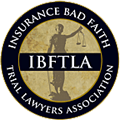What Are California’s Leash Laws?
Owning a dog in California comes with certain legal responsibilities. One is to obey state and local leash laws. Leash laws help keep a community safe by requiring owners to remain in control of their pets at all times. Breaking California’s leash laws can lead to fines for the owner. It could also result in civil liability if a dog running at large attacks and injures or kills someone.
CALIFORNIA’S LEASH LAWS Resources
When Are Leashes Required in California?
California does not have a universal leash law. No state law imposes a blanket requirement on all dog owners to use leashes or restrain their pets in public. Instead, the state gives cities and counties jurisdiction over leash laws in their municipalities. Therefore, whether or not a pet owner needs to use a leash depends on local laws. Almost every city in California has leash laws that prohibit dogs from running at large, require leashes and ask owners to stay in control of their dogs at all times.
For example, Sacramento County Code 9.36.061 requires owners to keep their dogs safely leashed and under control 24/7. Breaking the county’s leash law can lead to a citation in Sacramento. The City of Sacramento also has its own law banning dogs from running at large. This law requires pets to be restrained by leashes, tethers or enclosures at all times. Like most municipalities, Sacramento’s leash law has exceptions in designated fenced areas, such as off-leash dog parks. Owners must still keep their pets safely in control using voice commands in these areas, however.
What Are the Regulations for Dangerous Dogs in California?
Dangerous dogs come with stricter leash laws and ownership regulations in California. Animal control may give a pet a dangerous dog designation if the dog exhibits signs of potential viciousness. For example, if the animal attacked someone without provocation, forced people to defend themselves against aggression multiple times, killed a domestic animal or if a court had previously determined the dog to be dangerous. Owners of dangerous dogs must obey additional restrictions on top of standard leash laws in California, including keeping the dog indoors, in a fenced yard or on a secure leash at all times.
Do You Have a Dog Bite Claim?
Even without a statewide mandate, allowing a dog to run at large is a violation of the law in most cities and counties in California, including Sacramento. Breaking a local leash law could lead to consequences such as having to pay a fine. If the dog running at large causes property damage or injuries to domestic animals, farm animals or people, however, the responsible pet owner could face worse penalties.
In the most severe cases, a pet owner could receive criminal charges in connection with a dog attack in California. It is a to know that a dog has vicious or mischievous propensities but fail to keep the dog under control, resulting in a victim injured or killed while the dog was running at large. The owner could face a misdemeanor or felony if the victim was injured, or a felony charge if a victim was killed. The pet owner could also face civil consequences.
A pet owner in California will most likely be liable for a dog attack under the state’s strict liability dog bite law. Liability falls on pet owners after dog attacks even when they are not negligent in using leashes. As long as the victim was not provoking the dog or trespassing at the time of the attack, the owner will have automatic liability for the victim’s medical bills and other losses. A victim could also have a claim based on negligence, however, if the owner was breaking a local leash law at the time of the attack. If you were recently attacked by a dog running at large in Sacramento, contact a Sacramento dog bite attorney for legal advice.

















